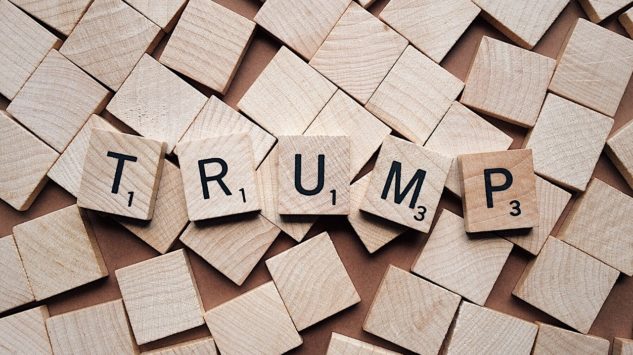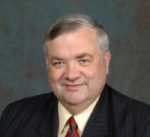Issue Briefs

Trump’s iconoclasm is a feature, not a bug
January 13th, 2020
By Martin Hutchinson
Three years into his administration, President Donald Trump is subject to a surprising level of obloquy, given the U.S. economy’s benign performance. Not only his political opponents, but even some nominal “conservatives” want to impeach him. The reason is clear: rigid thinkers committed to the “icons” of past consensus policy loathe President Trump with unparalleled venom for breaking those icons. But for more dispassionate thinkers, Trump’s iconoclasm clears the way to a better future.
Trump the Iconoclast
The term iconoclasm dates from the anti-icon campaign of the Byzantine Emperor Leo III (717-741) although the Egyptian Pharaoh Akhenaten had undertaken a similar campaign two millennia earlier. Like President Trump’s policies, iconoclasm was most popular in outlying parts of the Byzantine Empire (whose inhabitants had more contact with Moslems and Jews, both of whose religions forbid icons) than among the elites of Byzantium itself. While the iconoclasts had two periods of considerable success, cultural and military, their writings and beliefs were eventually rigorously suppressed by the “iconodule” orthodox – a warning of the possible fate of Trumpism and Brexit, should those movements not succeed.
In modern usage, iconoclasm refers to any overthrow of beliefs cherished by a strong majority of the ruling elite. President Trump has been iconoclastic in many different areas; indeed, his combative and bombastic style is highly offensive to many of the long-term Washington and media elite. However, in certain areas his iconoclasm has involved significant movement in policy, which would not have been possible had an orthodox candidate, Republican or Democrat, been elected in 2016.
Against the conventional wisdom about trade
In trade, for example, the governing Washington orthodoxy since 1945 has been one of free trade, enforced by international agreements and institutions, on the grounds that conventional economic theory holds the economic gains from global free trade to be immense.
In the real world we live in, that orthodoxy is wrong in several ways. A pure Ricardian approach to comparative advantage, if applied to service industries such as software, allows the lower-wage countries performing theoretically simpler tasks to swarm up the value chain and take over the jobs of the rich-country specialists – we have seen this in action from the Indian software industry. Then a Gladstonian approach to free trade, allowing other countries to become protectionist while you remain free-trading, may hollow out the industries in which you initially have an advantage, outsourcing not 80% of the business but 100%. Furthermore, experience has shown that many countries, especially China, cheat on international trade obligations mercilessly, stealing intellectual property and building local monopolies that they use to expand into other areas.
Tariffs have some advantages
Finally, tariffs yield revenue; it is by no means clear that a moderate tariff is any more distorting to trade patterns than an income tax. Certainly, a country that relies entirely on taxing its domestic citizens and imposes no tariffs on imports puts itself at a fearful competitive disadvantage. Inevitably also, the international institutions set up to facilitate free trade become self-serving bureaucracies, often hampering the very cause they are paid to maintain.
For these reasons, President Trump’s iconoclasm on tariffs is not only refreshing but beneficial. Thus, the Fed’s recent study attempting to prove that Trump’s tariffs have damaged the U.S. manufacturing sector appears mere special pleading from paid-up members of the free trade lobby. In reality, any such study should take account not only of the short-term benefits to industries protected by tariffs and costs to industries forced to pay higher input prices, but also the economic benefits from re-balancing Federal revenues away from income taxes and towards tariffs.
More important, any such study should take account of the signaling effect on foreign countries that impose excessive tariffs on U.S. exports or cheat in matters such as intellectual property. If the tariffs impose greater costs on protectionist or cheating trading partners than on U.S. businesses and consumers, they are beneficial in the short-term, and may be even more so in the long-term as they force trading partners to improve their behavior.
Global trading system is broken
It has been clear for some years now that the global trading system is broken by China, by excessive regulation and by the interaction of “funny money” interest rates and globalization. Trump has begun the difficult work of creating a better system, in which cheating is not rewarded, outsourcing to poor countries is not excessively encouraged and national coffers are filled modestly by the proceeds of reasonable tariffs, lifting costs from domestic taxpayers. His iconoclasm in this respect was long overdue.
Immigration
A second area of President Trump’s iconoclasm is immigration. This topic had been dominated in both political parties by the cheap-labor lobby, using accusations of racism to demonize those who opposed them. The result has been decades of decline for U.S. blue-collar living standards, as low-skill immigrants, legal and illegal, flooded the labor market. Even at high-skill levels, such scams as the H1B visa program, a system of indentured servitude such as was celebrated by the slavery proponent John C. Calhoun, among others, had depressed both the earnings of U.S. tech workers and the willingness of U.S. students to go into tech – producing a glut of useless lawyers and sociologists.
Against the political consensus
Trump has not gone the whole way in reversing this policy – indeed he has showed signs of expanding the odious H1B and H2B visa scams – but he has at least acknowledged the effect of unskilled immigration on low-skilled U.S. workers and the need for the U.S. to control its borders. In the latter area he appears to have made genuine concrete progress – two decades after such progress should have been a top priority. By doing so, he has both improved policy and opened the door to its further improvement, as Trump’s reforms become generally accepted and their benefits become generally apparent.
Climate change
A third area where Trump has smashed icons is “climate change”. Here the genuine science remains doubtful; there appears to be a warming effect from carbon dioxide, but it appears to be minor. What’s needed is a genuine research effort, with proper checks on the falsification of weather data. However, the global feeding-frenzy of dishonest scientists, greedy bureaucrats and fanatical control-freak Marxists must be stopped at all costs.
Trump has not stopped the feeding-frenzy altogether, but by withdrawing from the 2015 Paris Accord, over the horrified squawks of the media and the Washington establishment, he has slowed it considerably and made it clear to the world that those participating in it are engaging merely in pointless economic self-flagellation.
Much more needs to be done — indeed Margaret Thatcher can considerably be blamed for giving this nauseating gravy-train initial credibility as far back as 1988. Still there is now at least some chance that the long-term prosperity of the world will be saved from the red-green controllers who never really got over the fall of Communism in 1991.
New thinking in foreign policy
Finally, in foreign policy President Trump has smashed several icons. He has firmly sought to downplay the importance of the Middle East, recognizing that jihadism is barely among the top half-dozen of the challenges the West faces. Moreover, since the invention of fracking technologies here in the US Middle East oil is no longer a tourniquet around the world economy. Trump has recognized that Wilsonian policies of “nation-building” in areas where the U.S. has no geographic or cultural ties are very expensive, strategically counterproductive, and morally futile.
Trump has opened dialog with tyrants like North Korea’s Kim Jong-un, recognizing that the previous half century’s policy of isolation had achieved nothing useful. He has positioned the United States as a strategic antagonist of China, recognizing that China’s nominally Communist autocracy has interests opposed to the United States and is ruthless in pursuing them. He has treated the European Union on a grown-up basis, recognizing that allies that contribute nothing to defense and undermine the alliance’s policies are useless.
The long-term outcome of these foreign policy changes is yet unclear, and it will certainly require at least another full term of President Trump for their full benefits to arrive. Yet the recognition of hard realities and breaking of long-established foreign policy icons is in itself highly valuable.
Some wrong ideas
In a few areas, Trump has not been iconoclastic; and his policies may thus run into trouble. In monetary policy, he has even intensified the absurd Keynesian policy consensus favoring ultra-low interest rates and monetary “stimulus.” In fiscal policy, he has gone along with what had become a bipartisan policy consensus in favor of unbalanced budgets and wasteful public spending. Sadly, the budget “hawks” had pretty well disappeared by the time Trump came to office. In both areas, the next few years are likely to produce an unpleasant economic reckoning. Yet this will not be entirely Trump’s fault.
Finally, in regulatory policy, where party policies were sharply differentiated, Trump has followed the Republican consensus for deregulation, and his party orthodoxy in this area has borne excellent economic fruit.
Even with decades in power, the Byzantine iconoclasts in the long run failed, and were duly written out of history. Trump’s iconoclasm will equally require much longer to bear full fruit – a second term and a like-minded successor in 2024, at a minimum. Yet if his iconoclasm can survive and avoid being trampled into oblivion by the mastodons of political correctness, Trump will have become both a successful and a very consequential President.
The views and opinions expressed in this issue brief are those of the author.
 |
Martin Hutchinson is a GPI Fellow. He was a merchant banker with more than 25 years’ experience before moving into financial journalism. Since October 2000 he has been writing “The Bear’s Lair,” a weekly financial and economic column. He earned his undergraduate degree in mathematics from Trinity College, Cambridge, and an MBA from Harvard Business School. |
This article was originally published on the True Blue Will Never Stain http://www.tbwns.com